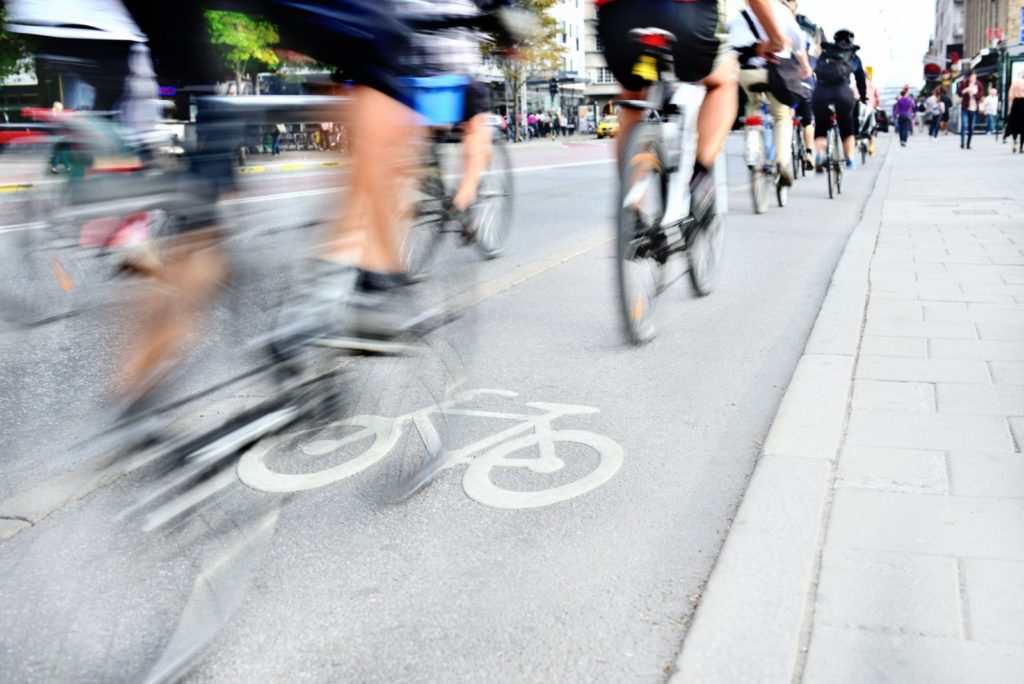Bike Handling: Avoiding doorings
Whether you are a seasoned rider or new to the street, it never hurts to review a few riding safety pointers. Today we explore doorings, one of the top injury-causing events caused by inattentive car drivers and passengers. This occurs when a driver or passenger opens a car door directly in front of a cyclist, causing the cyclist to crash. It happens so frequently that the word “dooring” evolved to describe the event.
Most states require that cyclists ride as close to the right side of the road as practicable. This traffic rule, designed to make sure bicyclists stay out of the way of the motor vehicles that traffic engineers somehow believe have more right to public space than others, typically puts riders right next to parallel parking spaces. That means drivers who open their doors open them directly into a likely bicycle rider zone.

While the dooring itself can cause significant injury, many cyclists suffer secondary catastrophic injuries when they get bounced into traffic and run over by a passing vehicle. Make no mistake—when a driver or passenger opens a door into moving traffic, they are typically violating a state vehicle code. For example, California’s vehicle code on this issue, Cal. Veh. Code section 22517, states:
No person shall open the door of a vehicle on the side available to moving traffic unless it is reasonably safe to do so and can be done without interfering with the movement of such traffic, nor shall any person leave a door open on the side of a vehicle available to moving traffic for a period of time longer than necessary to load or unload passengers.
That’s great for placing blame or establishing liability. But avoiding injury is far better than being in the right. The same rules requiring cyclists to ride as close to the right as practicable usually also allow a cyclist to take as much of a lane as necessary when riding close to the right is unsafe. This means a cyclist can “take the lane,” or move into the middle of a lane instead of staying to the right. This has its own potential hazards—either annoying drivers in the lane behind who start behaving aggressively, or getting hit from behind by an inattentive driver.
Kind of a pickle, right? So how does a cyclist avoid getting doored? The simplest way? The driver should follow the law and common sense—check for traffic before opening the door. An even better way is for cities to properly build infrastructure, like protected bike lanes, that keep cyclists away from the door zone. What we’ve learned is that relying on drivers to behave perfectly every time simply does not work, so changing the built environment is therefore essential to avoid catastrophic injuries to cyclists.
Cities are making fits and starts toward improved infrastructure, but these changes move glacially. So what are some door avoidance practices?
1. When possible, ride outside the door zone. This distance can vary, as some of the bigger vehicles have large doors that swing far out into traffic. Car drivers, unaware of the hazards doors pose, will sometimes honk, rev engines, or otherwise make cyclists uncomfortable when cyclists take as much space as necessary.
2. Focus on danger signs. There may also be times where it simply is not possible to avoid the door zone. In those situations, watch for danger signs. These include:
- A car that has just pulled into a parking spot.
- Car light patterns. Brake lights that turn off just in front of you may mean an imminent door opening, for example.
- A silhouette of a person in the car or the car’s side-view mirror.
- Weight shifts in the car, seen as the car’s frame bobbling on its suspension.
- A car that has not fully pulled into a parking space — it may be unloading a passenger.
- Any taxi or vehicle with a Lyft or Uber sticker on it.
- Commercial vans, trucks, and delivery vehicles. These drivers are typically more focused on their overbooked delivery schedules than the safety of others, and are in and out of their vehicles regularly.
Do your best to stay safe. If you are unfortunate enough to get doored, contact the police and demand a police report. This is true even when the driver is really apologetic and says it is all their fault. Without a police report documenting this, the driver’s attitude tends to change once the driver realizes that a claim on their insurance may be coming.
If your injuries allow, take a moment to use your phone to search for your state’s dooring vehicle code and provide it to the investigating officer. Police officers are generalists and as a result are sometimes unfamiliar with the specific law that the driver violated by dooring you.
Have you or someone you know been involved in a bicycle crash? Curious about your rights? Are you a lawyer handling a bicycle crash who wants more information on how to get the best result for your client? Contact Bicycle Law at (866) 835-6529 or info@bicyclelaw.com.
Bicycle Law’s Bob Mionske is licensed to practice in Oregon, its affiliate Coopers LLP has lawyers licensed in California, and either can affiliate with local counsel on bicycle cases across the country to make sure cyclists get the benefit of lawyers who focus on the issues specific to bicycle incidents.
